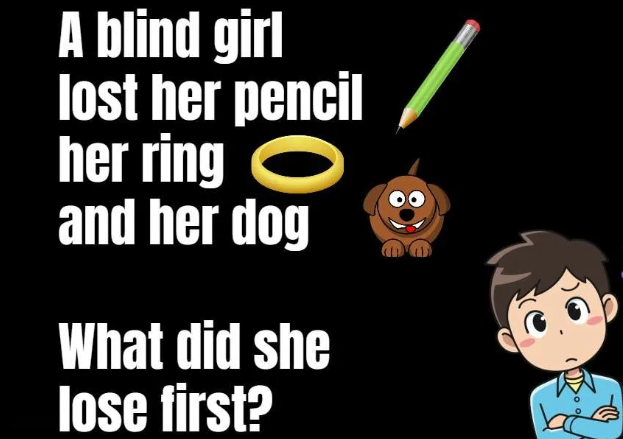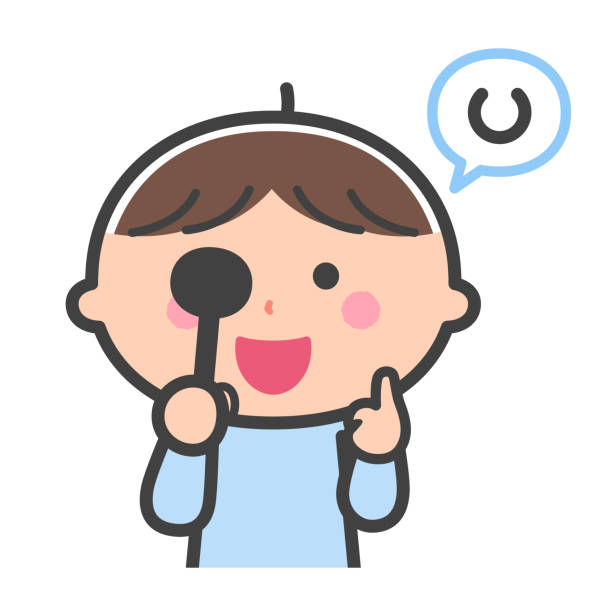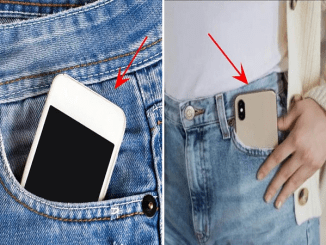Riddles have a unique charm—they challenge our thinking, stretch our imagination, and often leave us scratching our heads. Today’s puzzle takes this to a whole new level of curiosity. Here it is:
A blind girl lost her pencil, her ring, the letter “O,” and her dog. What did she lose first?
At first glance, it seems like a straightforward question about the sequence of lost items. But like all great riddles, there’s a clever twist hidden in plain sight. Let’s dive in, break it down, and uncover the surprising answer.

Challenge Your Mind: What’s Your First Guess?
Before we explore the solution, take a moment to think. What’s your initial guess? Is it her pencil, her ring, or perhaps something else entirely? Most people start by focusing on the objects mentioned, but riddles are never that simple. They’re designed to mislead and trick you into overlooking the obvious.
Got your answer? Great! Let’s dissect this puzzle together.
Common Mistakes Solvers Make
If this riddle stumped you, you’re not alone. Many people fall into one of these common traps when trying to solve it:
1. Focusing Too Much on the List of Items
It’s easy to fixate on the pencil, ring, “O,” or dog, debating which one could logically be lost first. But this approach misses the critical detail that holds the key to solving the puzzle.
2. Overanalyzing the Letter “O”
The inclusion of the letter “O” throws many solvers off. Is it symbolic? Does it represent a zero or a circular object? These questions are intentional distractions designed to lead you astray.
3. Ignoring the Girl’s Blindness
The most important clue is right in the riddle’s opening: the girl is blind. This detail is not just descriptive—it’s the foundation of the entire puzzle. Failing to consider its significance is what causes most people to miss the answer.
Step-by-Step Solution: Solving the Riddle
Let’s break down the riddle step by step, analyzing its details to uncover the answer.
Step 1: Understand the Setup
The riddle introduces a blind girl who has lost multiple items: her pencil, ring, “O,” and dog. The question asks which item she lost first.
At first glance, it appears to be about the sequence of physical items. But riddles often require you to look beyond the obvious.
Step 2: Focus on the Girl’s Blindness
The fact that the girl is blind is the critical clue. Her blindness is not just an incidental detail—it’s the context that shapes the entire riddle.
Step 3: Analyze the Objects
The listed objects (pencil, ring, “O,” and dog) are distractions. They don’t directly answer the question but instead misdirect your attention.
Step 4: Identify What Was Lost First
If the girl is blind, her blindness must have occurred before she lost anything else. Her sight was lost first, making this the answer to the riddle.
The Answer: Her Eyesight
The correct answer is her eyesight. The riddle is a classic example of how focusing on context—rather than the literal details—can lead you to the solution. It’s a clever play on assumptions, using the list of objects to distract you from the true answer.

Why This Riddle Is So Tricky
Riddles like this are designed to misdirect and challenge your thinking. Here’s why this particular puzzle is so effective:
1. It Distracts with Tangible Objects
By listing items like a pencil and a ring, the riddle encourages you to think about physical things rather than the girl’s condition.
2. It Exploits Linguistic Assumptions
We’re wired to take riddles at face value, assuming the answer lies in the list of items. This riddle flips that expectation by hiding the answer in the context.
3. It Challenges Logical Thinking
The riddle forces you to step back and consider the bigger picture. It rewards those who think critically and question their assumptions.
The Joy of Solving Riddles: Why They Matter
Riddles like this aren’t just fun—they’re great for your brain. Here’s how they benefit you:
- They Sharpen Critical Thinking: Riddles teach you to analyze information and think outside the box.
- They Improve Attention to Detail: Solving puzzles requires you to notice subtle clues that others might miss.
- They’re Great for Mental Flexibility: Riddles challenge your assumptions and help you approach problems from new angles.
Plus, they’re an excellent way to spark conversations and connect with others.
Share Your Thoughts: Did You Solve It?
Were you able to crack the riddle, or did it catch you off guard? Share your answer and reasoning in the comments below! It’s always fascinating to see how others approach tricky puzzles like this one.
And if you enjoyed this brain teaser, why not challenge your friends and family? Share the riddle with them and see who can solve it first.
Conclusion: The Beauty of a Well-Crafted Riddle
This riddle is a perfect reminder that the most obvious answer isn’t always the right one. By playing on assumptions and encouraging creative thinking, it invites us to see the world from a different perspective.
So, the next time you encounter a riddle, remember: the solution might be hidden in plain sight. Stay curious, keep thinking critically, and most importantly—have fun! After all, life’s best puzzles are the ones that challenge us to think differently.


